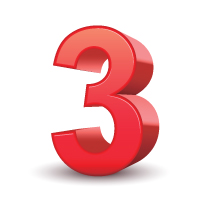Public Speaking : How Long for the First Draft & Best Format for Delivery
Public Speaking : How Long for the First Draft & Best Format for Delivery
I love learning from other people. I love going to experts and figuring out their tricks and secrets. For presentations, I like to be successful. I like to enjoy the process. Top pros are successful and enjoy the process. Here’s what they say about:
- How long to make the first draft.
- When to use full text and when to use notecards.
How Many Pages to Write?
How many pages or words it takes to do 20 minutes of presentation depends somewhat on your speaking style. Time your speech as you practice it to tune it up in length or down to meet your requirements.
- General rule for the first draft is that a 20 minute speech runs about 2,000 words or about eight double-spaced pages. This is based on an average speaking rate of 100 words per minute. Clear speech is likely to be perhaps 90 words a minute. For some people, even 85 words per minute.
Format of Speech Delivery: Text versus Cards
- There is no standard rule for whether to use a full script text or notes on cards.
- If you are very familiar with the material or you have made a similar presentation several times before, notes on cards probably work well.
- If the speech is new ground, you will probably want to begin working with the full text, at least for rehearsals.
- Greatest benefit of note cards is allowing you more eye contact with the audience. Some people use their power point slides as their notes, but they have a paper copy also.
- As described in a previous blog, with the full text written out, a great strategy to maintain eye contact is to look up at the end of each sentence.
- The drawback to having only notes is you may ramble and lose some of the ear appeal that you wrote into the original speech.
- Occasion
- If you are doing an informal farewell, polish is not as important as sincerity
- If delivering a speech to hundreds of listeners, they expect the remarks to run smoothly and finish on time. So you definitely want to have prepared text, unless you have memorized the remarks
Be sure to watch our English Speech Tips videos and Accent Reduction Tip videos for more English pronunciation and accent reduction exercise.
Public Speaking Skills: How Much Time To Prepare for A Speech
Public Speaking Skills: How Much Time To Prepare for A Speech
Don’t you just hate the mad scramble for getting ready for a presentation. You can avoid that scramble. The top professionals – the top pros –do. Here are their secrets:
How much time to prepare for a speech?
- Start right away. Even if you book the speaking engagement or presentation a year in advance, start then.
- Then you scan your media world for great articles related to your subject, quotes that work, and especially a strong grabber or opener.
- The worst thing is to sit down to write your speech or presentation and not have enough materials.
- This pre-preparation stage takes little or no time, just attention. Keep your eyes and ears open for potential contributions to the speech.
- The intensive period of writing and rehearsal should begin at least three weeks before the speech date.
- The speech-preparation process requires blocks of uninterrupted time.
- While writing, you don’t want every great thought to be interrupted by phone calls or visitors.
- While rehearsing, you won’t be able to work on your timing and pacing unless you can run through the entire speech.
- You might want to start writing the speech at night or on the weekend.
- Block off a total of about five to 10 hours, preferably in one- or two-hour blocks to work on the first draft.
- Plan to spend two to five hours revising the speech.
- Then plan on at least two or three rehearsals (20 to 30 minutes each for a 20-minute speech)
- Put this on your calendar so you can be sure you have enough time.
- Keep track of how much time it actually takes you to prepare your speech.
- Maybe you can create the speech in less time than suggested here, or maybe you need to allow for more time. If the speech is very important, you will want to spend extra time getting it just right.
Next time will be how long to make your first draft of your presentation. You don’t have to be blind again for your next speech!
Be sure to watch our English Speech Tips videos and Accent Reduction Tip videos for more English pronunciation and accent reduction exercise.
The Rule of Three!
Understanding Americans’ Nonverbal Behavior
On Thursday August 22, 2013 Dr. Antonia Johnson did a workshop “Understanding Americans’ Nonverbal Behavior” for international teaching assistants at the University of Colorado at Boulder for the Fall Intensive Training. Here are brief summaries of those articles and bibliography information compiled by Grace Sanders.
Summaries of Articles and Source of Article
Secrets of Nonverbal Communication by Susan Adams
This article summarized work by Joe Navaro on two types of nonverbal communication– appearance and gestures. Navaro provides tips on key elements of combining good appearance with confident gestures to make a positive first impression
Adams, S. (n.d.). Secrets Of Nonverbal Communication – Forbes. Information for the World’s Business Leaders – Forbes.com. Retrieved August 16, 2013, from http://www.forbes.com/2010/11/10/body-language-nonverbal-leadership-careers-communication.html
Body Language, Understanding Nonverbal Communication
This article categorizes different types of nonverbal communication by their meaning. It describes the meaning of a variety of gestures. The article also highlights why it is important to be able to decipher body language and the different ways that nonverbal communication cues can be helpful in making your communication successful.
Body Language – Communication Skills Training From MindTools.com.(n.d.).Mind Tools – Management Training, Leadership Training and Career Training. Retrieved August 16, 2013, from http://www.mindtools.com/pages/article/Body_Language.htm
Evidence That Little Touches Do Mean So Much by Benedict Carey
This New York Times article focused on how human touch can convey meaning. It presented interesting research on the different effects that touching can have on people— to provide comfort, rapport, to decrease stress, increase motivation, and increase performance. It describes studies which indicate the underlying neurochemical responses in the brain.
Carey, B. (2010, February 22). Evidence That Little Touches Do Mean So Much.New York Times. Retrieved August 16, 2013, from http://www.nytimes.com/2010/02/23/health/23mind.html?_r=0
Types of Nonverbal Communication, 8 Major Nonverbal Behaviors by Kendra Cherry
This article is a good intro to the different types of nonverbal communication. It listed 8 different types with brief definitions of each.
Cherry, K. (n.d.).Types of Nonverbal Communication.Psychology – Complete Guide to Psychology for Students, Educators & Enthusiasts. Retrieved August 15, 2013, from http://psychology.about.com/od/nonverbalcommunication/a/nonverbaltypes.htm?p=1
How Do Culturally Different People Interpret Nonverbal Communication? By M. Edmonds.
In this article the author focused on different gestures and their meanings in different cultures. It was an excellent example of why it is important to know how nonverbal communication is used in whichever culture you reside in or are visiting.
Edmonds, M. (n.d.).HowStuffWorks “How do culturally different people interpret nonverbal communication?”.HowStuffWorks “People”. Retrieved August 15, 2013, from http://people.howstuffworks.com/nonverbal-communication.htm/printable
Studies Point to Power of Nonverbal Signals by Daniel Goleman
This article described studies which indicated how easily people’s behavior is swayed or changed by nonverbal signals in those around them. The article highlighted the power of tone of voice and how people pick up on its’ message subconsciously or unconsciously. The article focused on judges, doctors, and researchers and how they can all influence their juries, patients, and subjects into different decisions and perceptions just by tone of voice – without conscious intention.
Nonverbal Cues are Easy to Misinterpret by Daniel Goleman
This article describes how people often misinterpret nonverbal cues. The gist is that people think they are more accurate in their judgments using nonverbal behavior cues than is actually the case. The author describes the nonverbal behaviors and cues that people use to determine individual character traits, such as honesty. A memorable conclusion is that the same nonverbal behaviors which may indicate that a person is lying are the same signals of fear of a person that he/she will not be believed. The author advices caution and using questions and multiple sources of information for interpretation of behavior of individuals.
Goleman, D. (1986, April 8). Studies Point to Power of Nonverbal Signals.New York Times. Retrieved August 16, 2013, from http://www.nytimes.com/1986/04/08/science/studies-point-to-power-of-nonverbal-signals.html?pagewanted=2
Nonverbal Communication, Improving Your Nonverbal Skills and Reading Body Language, Jeanne, S., Smith, M., Boose, G., & Jaffe, J.
The article organizes many nonverbal behaviors with multiple examples. Cleanly written, the article views nonverbal behavior from both reading other people’s body language and conscious use of gestures, posture, and other nonverbal behaviors to reinforce or complement spoken behavior.
Jeanne, S., Smith, M., Boose, G., & Jaffe, J. (n.d.). Nonverbal Communication: Improving Nonverbal Skills & Reading Body Language. Helpguide helps you help yourself and others. Retrieved August 15, 2013, from http://www.helpguide.org/mental/eq6_nonverbal_communication.htm
The Power of Nonverbal Communication by M. Manglesdorf.
This is an interview with an MIT professor using a new technological device to study nonverbal cues and behavior in the workplace. The device and research of the professor examine features of day to day interactions which are correlated with successful business management. Particularly interesting is the author’s focus is on the power of the nonverbal behaviors to influence judgment and decision making in the work world. He describes a study which found evidence of experienced business people relying on the enthusiasm of a pitch to determine likely success of a business plan. Manglesdorf discusses possible underlying kernel of truth for these judgments as well as recommending addition sources of information to do informed analysis and judgment of business behavior and success.
Manglesdorf, M. (n.d.).The Power of Nonverbal Communication – WSJ.com.The Wall Street Journal – Breaking News, Business, Financial and Economic News, World News & Video – Wall Street Journal – Wsj.com. Retrieved August 15, 2013, from http://online.wsj.com/article/SB122426675804545129.html
Reading Facial Expressions of Emotion by David Matsumoto and Hyi Sung Hwang
The article describes humans’ innate ability to produce and accurately interpret facial expressions. Some people are better at knowing what expressions mean than others. The authors, who are also researchers, discuss steps identified by their research which can improve one’s ability to interpret facial expressions. This is particularly beneficial to people who may be in a position where it is often important to interpret what people’s true intentions really are. The article also stresses that interpreting these expressions is only the first step; a person must then know how to appropriately respond to nonverbal cues from others.
Matsumoto, D., & Hwang, H. S. (n.d.). Reading facial expressions of emotion. American Psychological Association (APA). Retrieved August 15, 2013, from http://www.apa.org/science/about/psa/2011/05/facial-expressions.aspx
The Right Stance Can Be Reassuring by Kate Murphy
Research finds that standing in a power pose for just 2 minutes increases testosterone and reduces cortisol and can make you feel more at ease and confident in a stressful situation. The article states that striking a power pose will not change your personality to be super outgoing, but rather gives you a boost of confidence to make it possible to feel comfortable enough for your real personality to come through.
Murphy, K. (2013, May 3). The Right Stance Can Be Reassuring. New York Times. Retrieved August 16, 2013, from http://www.nytimes.com/2013/05/05/fashion/the-right-stance-can-be-reassuring-studied.html?pagewanted=print
Verbal and Nonverbal Communication- Impact on Relationships by Sam Owens
This article has a “to the point” explanation of how it can be stressful and confusing when someone’s nonverbal communication fails to match up with what they are saying. The example is if one’s significant other says “I love you” but conveys anger gestures or tone of voice.
Owen, S. (n.d.). Sam Owen: Verbal And Non-Verbal Communication – Impact on Relationships. UK News and Opinion – The Huffington Post United Kingdom. Retrieved August 16, 2013, from http://www.huffingtonpost.co.uk/sam-owen/verbal-and-non-verbal-communication_b_2485864.html
The Business of Nonverbal Communication: How Signals Reflect Your Brand by August Turak
Nonverbal communication is important in a number of situations and it is important to be in control of the signals you are sending so that people will perceive you in a way that you feel is positive. This article stresses why it is important to manage your nonverbal communication. The author offers many examples of how certain signals can, intentionally or not, send a strong message to others and how these need to be carefully controlled to work in your benefit.
Understanding Nonverbal Communication
This article describes different situations and what you can interpret from nonverbal communication– such as determining dishonesty or rising anger in the person you are communicating with. Included also are the cues to when a group is disengaged.
Turak, A. (n.d.). The Business of Nonverbal Communication: How Signals Reflect Your Brand – Forbes. Information for the World’s Business Leaders – Forbes.com. Retrieved August 15, 2013, from http://www.forbes.com/sites/augustturak/2010/12/17/the-business-of-nonverbal-communication-how-signals-reflect-your-brand/
English Speaking Communication: Presentations- Secrets of the Pros for Reading a Speech
English Speaking Communication: Presentations- Secrets of the Pros for Reading a Speech
Sometimes pros will read their speech. I’ve seen pros look and sound very, very good. They used special strategies to maximize the effectiveness of their presentation. Here are some of my favorite tips and strategies from the pros:
- No matter what format you use for delivering the speech (note cards or printed speech), it should probably start out as a full text. Here you can make sure you are saying what you want to say. Here you determine pauses and other details of effective delivery
- As you work over your speech during rehearsals, make notes on the text. Use highlighter or underline or circle words.
- Then you can go right to the phrases that will trigger the train of thought.
- You have your own personal road map to help you move quickly through the speech and ensure that you don’t lose your place.
- Your cards or text should include your grabber at the top or on the front page. This should be memorized so you can deliver it looking right at the audience. You should try to memorize your conclusion too.
Layout of Printed Speech
- Print the speech in large, dark, typeface that you can read while standing upright at the lectern.
- Use upper and lower case, rather than all caps, because it makes it easier to scan.
- Most speakers like the speech to be double- or triple spaced and pages to be numbered, just in case the entire speech tumbles to the floor.
- Put the speech into a folder or a pocket folder. A portfolio which can display two entire pages of the speech at once and facilitates sliding pages smoothly.
- Don’t staple the speech but use a paper clip to hold the speech together.
- As you finish each page, slide it across into the “out” pile. This avoids flipping and page turning.
Eye Contact
- With the full text written out, a great strategy to maintain eye contact is by looking up at the end of each sentence.
For the next blog on doing presentations, we jump backwards in time. To come is clever advice from the pros about how much time you will need to prepare for a presentation. That will prevent you from getting the crazy, stress -filled last minute scramble to a great presentation.
Be sure to watch our English Speech Tips videos and Accent Reduction Tip videos for more English pronunciation and accent reduction exercise.












